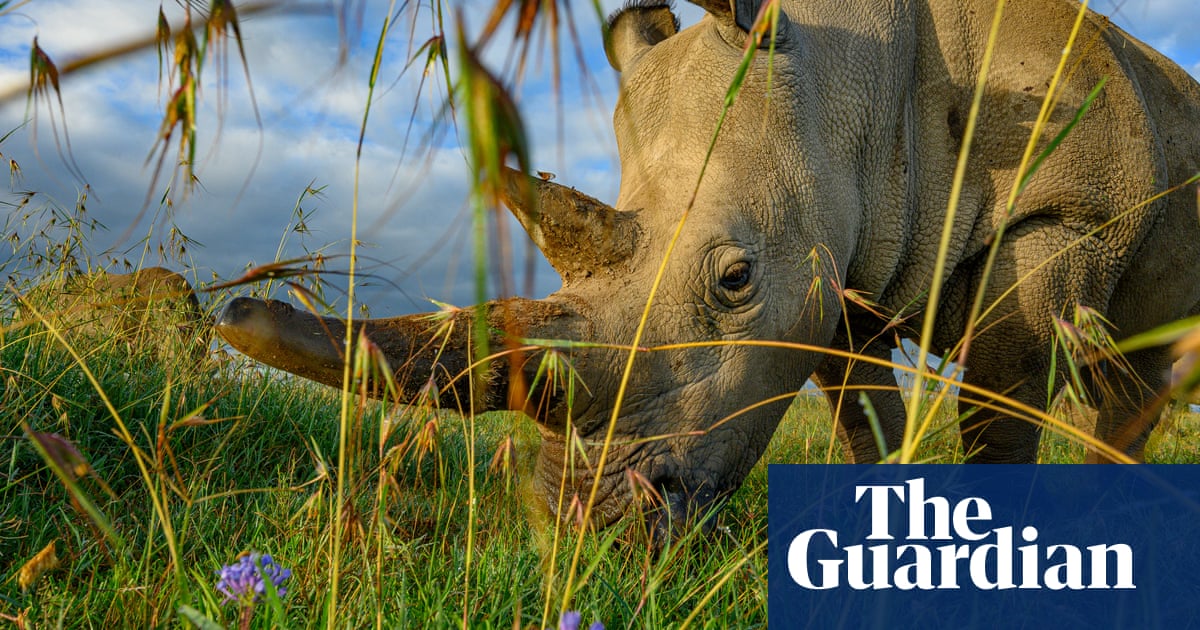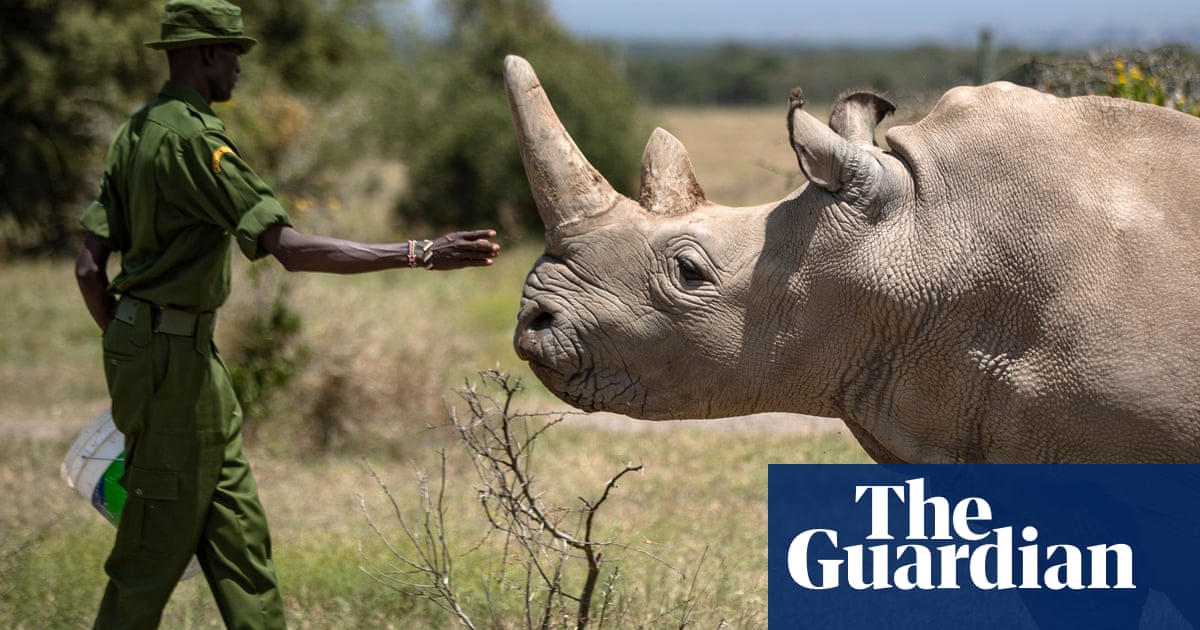
The critically endangered northern white rhino could be saved from the brink of extinction after scientists performed the first successful embryo transfer in white rhinos.
After the last male northern white rhino, Sudan, died in 2018, the disappearance of the species looked imminent. Just two infertile female northern white rhinos – Fatu and Najin – remain, and are under 24-hour armed protection at a conservation reservation in Kenya. But a new scientific advancement means the mother and daughter may not be the last of their kind.
An international team of researchers from BioRescue – a consortium, backed by the German government, which aims to halt extinctions – has performed the first successful embryo transfers in southern white rhinos, paving the way for the technique to be used for their rarer northern counterparts.
In September 2023, scientists transferred two southern white rhino embryos into surrogates at the Ol Pejeta Conservancy in Kenya, resulting in a successful pregnancy. While commonly used in humans, horses and cows, the method had never been used in rhinos before.
The father and the pregnant mother died after contracting a rare, unrelated bacterial infection when the foetus was 70 days old, but researchers said the pregnancy was proof that the technique can work.
Thomas Hildebrandt, the BioRescue project head and a professor at the Leibniz Institute for Zoo and Wildlife Research, said the technique was a key step in saving the northern white rhino.
“This little baby is the proof of everything,” he told the Guardian. “The sperm injection, the fertilisation, the liquid nitrogen, the thawing – this was never done before for rhinos. All of it could have failed.”
For the process to have worked in rhinos represented a major breakthrough, he said. In comparison: “Humans are simple! We are working with a two-and-a-half-tonne mammal.”
By May or June this year, scientists plan to implant the first northern white rhino embryo. The Northern rhino embryos were created using sperm gathered from two now-dead males, and eggs gathered from Fatu. They will be carried by a southern white rhino surrogate in Kenya. Just 30 embryos remain – stored in liquid nitrogen at -196C in Berlin, Germany and Cremona, Italy.
The surrogate rhino is injected with the embryo through its anus. If the 16-month pregnancy is successful, it would be the first northern white rhino born since 2000. It could also pave the way for the conservation of the Sumatran rhino, which number about 40 in the wild.
Researchers said they would perform more embryo transfers if the first pregnancy seemed to be going well, meaning that as many as six northern white rhino calves could be born in a short period. Scientists said it would be important for the calves to meet Fatu and Najin while the pair were still alive, to learn how to behave like a northern white rhino.
Even if several northern white rhino calves are born, however, they will not be genetically diverse enough to produce a viable population, Hildebrandt said. The 30 surviving northern white rhinos embryos are all based on eggs from Fatu and sperm from two males.
If more mammals are born, researchers said they would seek to use gene editing to improve the genetic diversity of future offspring, also taking genetic material from museum samples.
“We go to the skulls and find genetic materials,” Hildebrandt said. “Then we would use gene editing to put them into the population. We plan to go to all the museums with northern white rhino specimens. It is not just a scientific experiment, we really want to bring it back.”
Last year, it was announced that southern white rhino populations increased for the first time since 2012, rising from 15,942 at the end of 2021 to 16,803. But concerns remain about their longterm survival.
Erustus Kanga, the director general of Kenya Wildlife Service, said they were thrilled with the breakthrough to save the subspecies.
“Kenya Wildlife Service is delighted to have been part of this journey for the last 13 years, since the northern white rhinos were brought to Kenya in 2009, and for being part of the great initiative of the BioRescue consortium over the last four years,” he said.
“This is a great milestone in the preservation of the northern white rhino genetic lineage.”
Justin Heath, the CEO of Ol Pejeta Conservancy, said it was a huge breakthrough for conservationists, but was bittersweet after losing the surrogate and bull to the bacterial infection.
“To have had the world’s first pregnancy in a rhino after a successful surrogate transfer on Ol Pejeta Conservancy is a point of great pride for us all,” he said. “We look forward to welcoming future surrogates’ rhino calves under the foothills of Mount Kenya very soon.”












